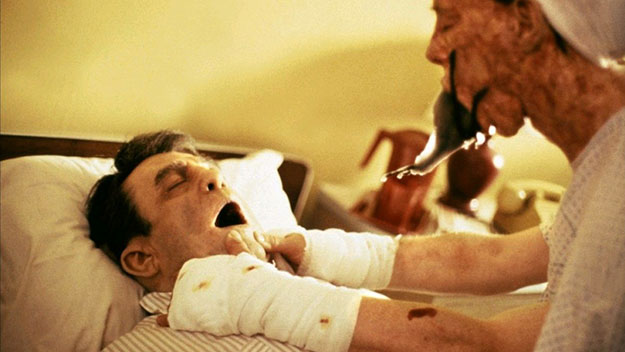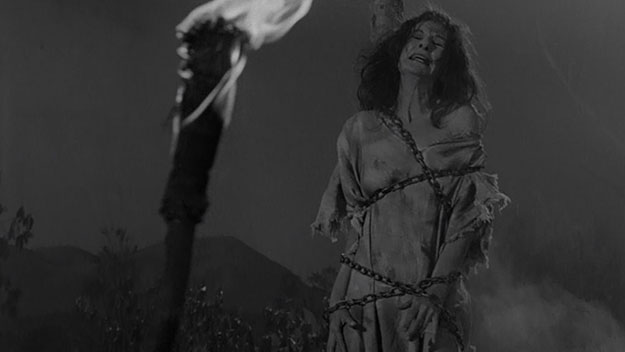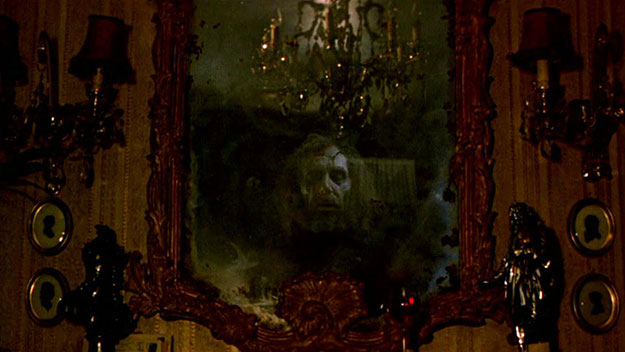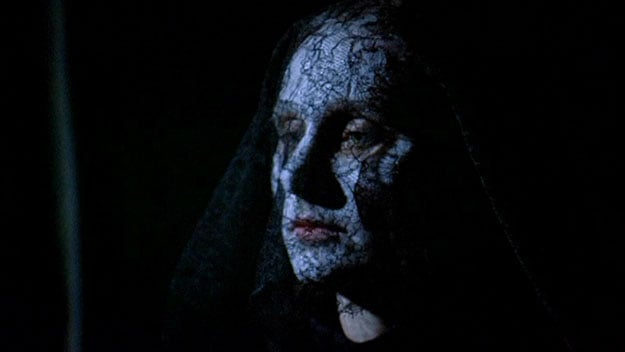TCM Diary: Halloween in July

The Hidden
Horror excels as a genre of the grotesque and of excess, whether it’s expressed through atmosphere, through violence, or through twisting our moral expectations. Arriving at the tail end of the 1980s horror boom, The Hidden (1987) takes the horror genre and cross-breeds it with science fiction and action adventure. Joining the likes of Predator, Dead Heat, and Alien, the result is a work of pure genre fantasy awash in detailed special effects and over-the-top (though not disturbing?) violence.
The Hidden tells the story of a fugitive extraterrestrial taking refuge on earth, specifically, in human bodies—where it reveals a taste for fast cars, guns, loud music, drugs and violence. Hot on the invader’s tail is FBI Agent Lloyd Gallagher, played with typically boyish charm and alien naivete by Kyle MacLachlan (who recently returned in David Lynch’s new Twin Peaks). MacLachlan, along with his angry and befuddled partner (Michael Nouri), pursue the invader through Los Angeles, leaving a trail of destruction. It all ends with a fiery climax that pays tribute to David Cronenberg and to Stephen King, whose influence on 1980s genre film fare was pervasive.
Director Jack Sholder (A Nightmare on Elm Street 2: Freddy’s Revenge) follows in the footsteps of Cronenberg in making the body the site of horror, turning teenage sexual repression and supernatural possession into painfully embodied reality. The bodily violence of The Hidden also shares the mission of a contemporaneous movement in horror literature: splatterpunk, which similarly dwelled on descriptions of violence in detail and banished traditionally suggestive techniques. The genre’s commitment to graphic violence went so far as to draw the criticism of an earlier envelope-pusher in representation, Psycho writer Robert Bloch. The splatterpunks count as their most notable acolyte Clive Barker, whose film Hellraiser, also from 1987, delivers some of the decade’s most graphic gore as well as its most poetic moments of horror.

Horror Hotel
When The Hidden kicks off with a car chase at full volume—tires screeching, heavy metal blaring, bullets flying—it’s like a splatterpunk version of The Terminator with tongue in cheek. Like Barker’s Hellraiser (and unlike Ridley Scott’s latest Alien films), The Hidden is thoughtful without pretensions. It’s a movie that seems aware of how violent it is, reaching parodic levels of mayhem which almost dare critics to protest or to dismiss it. All the sound and fury, the shining chrome and blaring music, action and destruction, might suggest a rapidly changing culture, or signify nothing. As Kyle Maclachlan’s character explains his extraterrestrial quarry’s predilection for a certain type of sports car: “He likes Ferraris.”
Needless to say, the nature of horror had changed since its earlier days, and there are often multiple stories to follow in the long view of film history. 1960 is widely accepted as a watershed because of Hitchcock’s Psycho, but the same year brought Horror Hotel from future made-for-TV horror master John Llewellyn Moxey. In Psycho, Janet Leigh’s fateful shower introduced a new set of rules whereby marquee name recognition and narrative norms were longer guarantees of a protagonist’s safety. In Horror Hotel, good old ghosts and witches pose a menace to any overly curious soul who wanders out of the light and into the shadows of the occult—but the movie also embraces the new paradigm established by Psycho where no character is safe.
Horror Hotel tells the cautionary tale of a young woman visiting a mysterious, long-forgotten New England town on a research trip for her thesis on witchcraft. What was meant as a historical investigation turns out to be more present-day anthropology as the young student encounters active witchcraft and satanic minions. The film is an atmospheric fever dream, filled with fog-drenched studio sets, spooky night driving, venerable inns, and weird characters. It amplifies the traditional elements of horror settings to heightened levels that evoke a dreamy interiority more readily found in dream ballets and avant-garde psychodramas. The moral implications of death and horror are quite different in The Hidden and Horror Hotel. In the former the transfer of the parasitic alien is indiscriminate, hinging on coincidence, but in Horror Hotel death is the price paid for transgressing the boundaries of mainstream Christian ideology and seeking out the unknown.

From Beyond the Grave
In Kevin Connor’s Amicus-produced 1974 British horror anthology, From Beyond the Grave, there are also moral implications to the horrible fates of victims, and supernatural consequences. The horror anthology had been a staple of British horror offerings since the pioneering, and still terrifying, Dead of Night omnibus, continuing on to 1970s chillers like Tales From the Crypt, Vault of Horror, and Asylum, many of them featuring Peter Cushing. In From Beyond the Grave, each tale is bookended by an antique-shop scene with bushy-eyebrowed Cushing as a sinister but fair-minded store owner, quietly smoking his pipe and lamenting to himself that “money is the root of all evil.”
One tale centers on a possessed mirror, the gateway to a shadowy netherworld, which turns David Warner’s swinging pad into a slaughterhouse. Another follows an aging soldier who finds himself inadvertently engaged in murder with the help of a mysterious panhandler and his daughter. The third story is a lighter piece detailing a man who discovers he is under attack by a homicidal “elemental” (an invisible creature which is, unbeknownst to him, perched on his shoulder) and must enlist the help of a kooky paranormal expert to exorcise the pesky beast. The film concludes with the story of an old door which, once installed in the young buyer’s home, opens into a chamber from the past, outside of time and space.
Most of the terrors in From Beyond the Grave, as in Horror Hotel, involve the dangers of the past being unleashed on the present. (The film also shares Horror Hotel’s use of Shepperton Studios and some beautifully detailed set design and lighting, particularly in the film’s first and last segments.) The violence however, is of particular interest, inhabiting a place somewhere between Horror Hotel’s shock by implication and The Hidden’s lay-it-all-out -there body horror. Yet what it resembles most closely is the typical final panel in an EC Horror Comic, in which just enough blood and gore is discernible to drive home the smirking, ironical comeuppance which characterizes each story’s cynical conclusion. W.W. Jacob’s 1902 short story The Monkey’s Paw is another important template for horror by implication, but Beyond the Grave also draws on the excessive garage-sale Gothic of Horace Walpole’s pioneering 1764 novel Castle of Otranto.

From Beyond the Grave
From Beyond the Grave mixes the mechanical brilliance of Jacob’s short story and the overcooked excess of Walpole’s Otranto, filtering both through the brilliant economy of comic-book storytelling. The result is a horror film with enough dead flesh to make living flesh crawl.
Horror Hotel airs July 13, From Beyond the Grave on July 18, and The Hidden on July 29 on Turner Classic Movies.
Chris Shields is a New York–based filmmaker and writer. He is a frequent contributor to Art & Antiques magazine and Screen Slate, and recently completed his latest documentary, Valton Tyler: Flesh is Fiction. His next film, the horror comedy Killer Makeover, will be out later this year.







